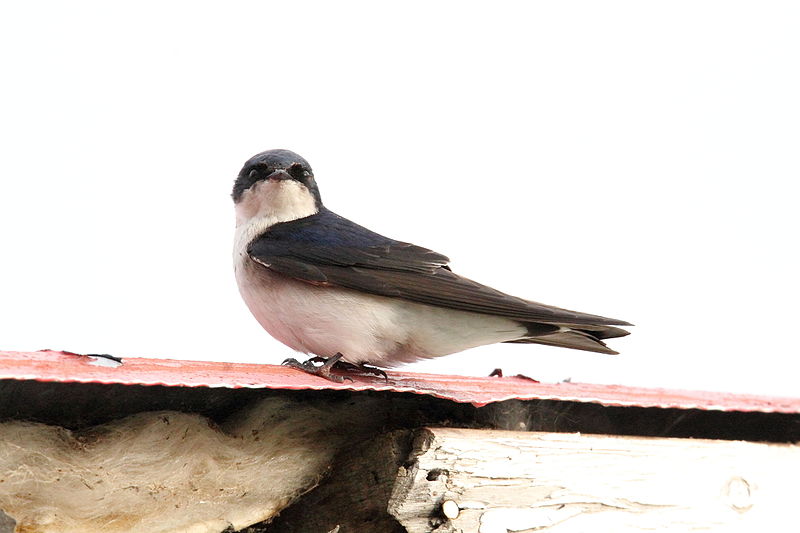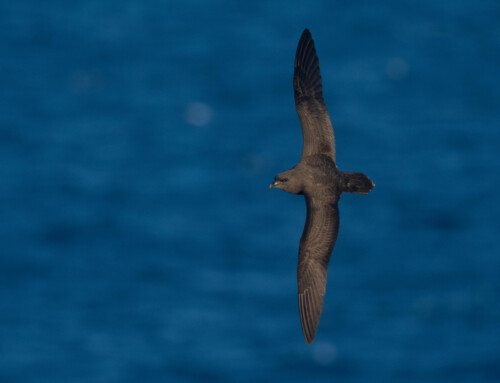A study of extra-pair paternity in the Chilean Swallow
LINKED PAPER
Extra-pair paternity in a population of Chilean Swallows breeding at 54 degrees south. Valentina Ferretti, V., Liljesthröm, M., López, A.S., Lovette, I.J. and Winkler, D.W. 2016. Journal of Field Ornithology. DOI: 10.1111/jofo.12144 VIEW
Direct interactions between the sexes generally involve an ongoing conflict of interest that affects breeding behaviour and the reproductive output of any social pair. These interactions can lead to extra-pair copulations that may result in extra-pair young being raised by the cuckolded parent. Although most bird species were long considered monogamous (Lack 1968) molecular techniques have revealed a large variation in extra-pair paternity rates – measured as the proportion of broods that have at least one extra-pair offspring, or the proportion of extra-pair young in a population (0-95%, Arnold and Owens 2002).
Much research has been carried out on trying to understand the causes of this variation in extra-pair paternity rates (reviewed in Griffith et al. 2002, Neudorf 2004). A broadly accepted idea is that tropical species generally exhibit lower rates of extra-pair paternity than species breeding at higher latitudes, and several hypotheses have been proposed to account for this seeming geographic pattern of variation (reviewed in Macedo et al. 2008). However, most studies to date have been conducted on the minority of bird species inhabiting the northern hemisphere, making generalizations difficult.

© David W. Winkler
In our study we examined the rates of extra-pair paternity of a swallow breeding at 54 degrees South of latitude, the Chilean Swallow, Tachycineta meyeni (Figure 1). We expected to find rates of extra-pair paternity to be comparable to those of its congener the Tree Swallow, T. bicolor, which breeds at similar latitudes but in the northern hemisphere (85% of nests with extra-pair young, O’Brien and Dawson 2007). Contrary to predictions we found that Chilean Swallows at our study site in Tierra del Fuego (Argentina) had very low rates of extra-pair paternity (13.5% of nests with at least one extra-pair young, and 6.8% of extra-pair nestlings in the sampled population), even lower than those reported in the tropical species, Mangrove Swallow, T. albilinea (26% of nests with extra-pair offspring, Moore et al. 1999). The lack of support for a latitudinal gradient in extra-pair paternity we encountered could be because predictions concerning this pattern of variation were based on studies of few tropical and south-temperate species.

© Marcela Liljesthröm
In our study we did not test for an association between extra-pair paternity and the variables that might drive this behaviour. However, we believe that the highly unpredictable weather and ecological idiosyncrasies of the island of Tierra del Fuego might be playing a central role in explaining this pattern: high parental investment at this site might be crucial for reproductive success.
Under the extreme daily changes in weather conditions experienced at the site (e.g. see Figure 3), increased parental attention to the nest should be critical for a successful incubation and during the chick-rearing period, decreasing the chances of birds seeking extra-pair copulations. In fact, Ospina et al. (2015) found that males have false brood patches with sparse feathering of the abdomen, and they participate in the incubation of the clutch. In Tierra del Fuego unattended eggs could be at risk of freezing, leading to nesting failures. In addition, bad weather conditions can affect insect supply and foraging success of these aerial insectivores while having to feed nestlings, and the full attention of both parents might be needed during this period.

Taken together, these findings are indicative of the intense pressure these birds experience during all stages of the nesting cycle, limiting the possibilities of seeking copulations outside of their social pair bond.
References
Arnold, K. E. and Owens, I. P. F. 2002. Extra-pair paternity and egg dumping in birds: Life history, parental care and the risk of retaliation. Proceedings of the Royal Society Biological Sciences Series B 269:1263-1269. VIEW
Griffith, S. C., Owens, I. P. F. and Thuman, K. A. 2002. Extra pair paternity in birds: a review of interspecific variation and adaptive function. Molecular Ecology 11:2195-2212. VIEW
Lack, D. 1968. Ecological Adaptations for Breeding in Birds. Meuthen, London.
Macedo, R. H., Karubian, J. and Webster, M. S. 2008. Extrapair Paternity and Sexual Selection in Socially Monogamous Birds: Are Tropical Birds Different? Auk 125:769-777. VIEW
Moore, O. R., Stutchbury, B. J. M. and Quinn, J. S. 1999. Extrapair mating system of an asynchronously breeding tropical songbird: The Mangrove Swallow. Auk 116:1039-1046. VIEW
Neudorf, D. L. H. 2004. Extrapair paternity in birds: Understanding variation among species. Auk 121:302-307. VIEW
O’Brien, E. L. and Dawson, R. D. 2007. Context-dependent genetic benefits of extra-pair mate choice in a socially monogamous passerine. Behavioral Ecology and Sociobiology 61:775-782. VIEW
Ospina, E. A., Cooper, C. B., Liljesthröm, M., Ardia, D. R. and Winkler, D. W. 2015. Biparental nest-attendance in Chilean Swallows (Tachycineta meyeni) breeding in Ushuaia, Argentina. Emu 115:76-79. VIEW
Image credit
Featured image: Chilean Swallow, Tachycineta meyeni © Dominic Sherry | CC-BY-SA-2.0 via Wikimedia Commons
If you want to write about your research in #theBOUblog, then please see here.





